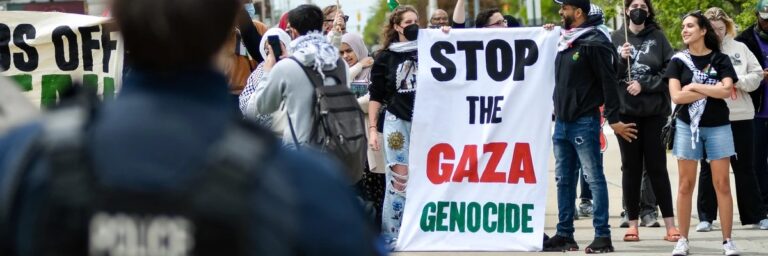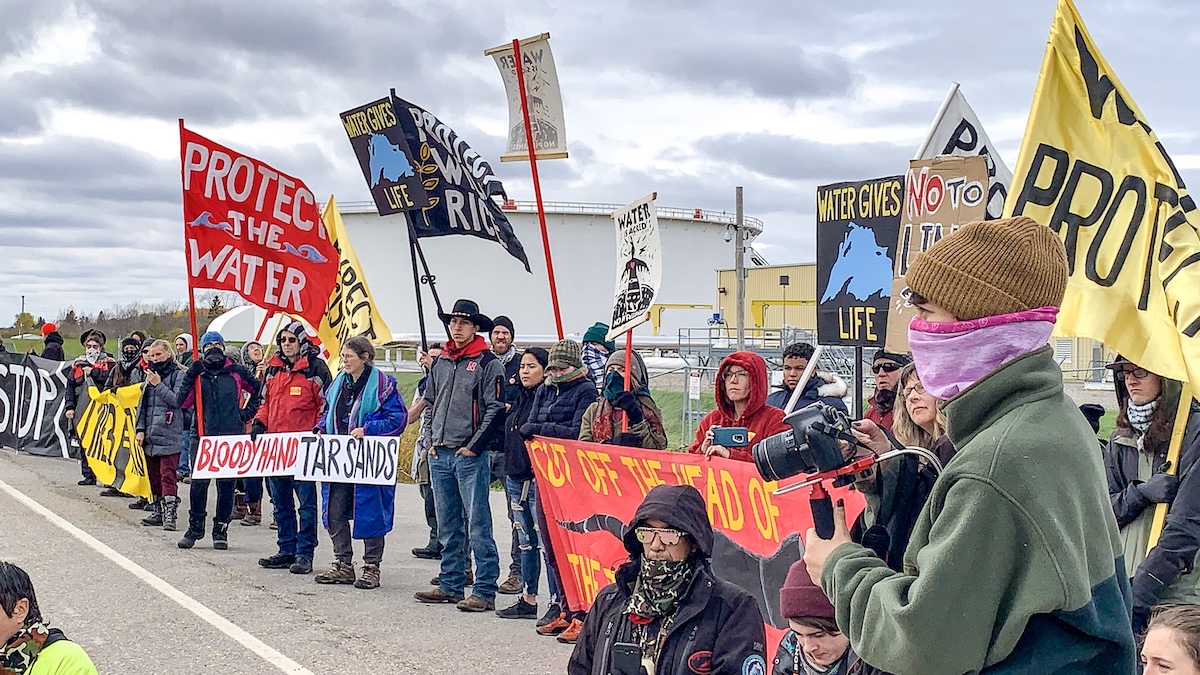“If someone is speaking more about ‘violent encampments’ than they are about violent genocide of the Palestinians, they have a problem reflective of deep and dangerous biases,” said one supporter.
Julia Conley for Common Dreams
Just over a week after U.S. President Joe Biden defended police crackdowns on dozens of anti-war protests on college campuses by declaring that students don’t have “the right to cause chaos,” a new analysis on Friday showed that nearly all the campus demonstrations have not been violent at all—and many that have descended into violence did so due to police interventions or aggressive counter-protests.
The Armed Conflict Location and Event Data Project (ACLED) examined 553 campus protests that took place across the U.S. between April 18-May 3 and found that fewer than 20 resulted in serious violence or property damage—meaning that 97% of the protests remained non-violent.
The group categorizes demonstrations as violent only when “physical violence that rises above pushing or shoving” takes place or when property damage includes protesters “breaking a window or worse.”
ACLED’s latest analysis comes after a previous study released May 2, which found 99% of campus protests in the first days of the burgeoning student-led movement against Israel’s assault on Gaza had remained peaceful.
In the latest report, analyzing the 3% of protests that became violent, ACLED found that at half of those students clashed with police who had been sent in to clear the peaceful student encampments—which should have been allowed to proceed unimpeded according to Biden’s speech about the protests on May 2, in which he said, “Peaceful protest is in the best tradition of how Americans respond to controversial issues.”
At one protest at Washington University in St. Louis, three police officers were injured, and at the University of Wisconsin, Madison on May 1, a state trooper was reportedly injured after being hit with a skateboard.
ACLED found two instances of serious property damage: a protest at Portland State University where students shattered glass and damaged computers and other furniture while occupying a library, and the occupation of Hamilton Hall at Columbia University, where students broke windows.
But examining the campus protests as a whole, ACLED did not find evidence of the “disorder” Biden spoke of when he said earlier this month that “vandalism, trespassing, breaking windows, shutting down campuses, forcing the cancellation of classes and graduations… threatening people, intimidating people, instilling fear in people is not a peaceful protest.”
The most significant violence that’s erupted at a campus protest so far, according to ACLED’s data, was an attack by a pro-Israel mob on an encampment at the University of California, Los Angeles, which went on for hours as police stood by.
“If someone is speaking more about ‘violent encampments’ than they are about violent genocide of the Palestinians, they have a problem reflective of deep and dangerous biases,” said Tanya Zakrison, a surgeon at University of Chicago Medical Center, close to the college campus where students on Thursday said police shoved and hit them as they removed an encampment this week.
ACLED documented at least 70 examples of violent police crackdowns, including the use of chemical agents and batons to disperse crowds.
According to The New York Times, more than 2,800 people have now been arrested at campus protests at more than 50 colleges in the United States. The crackdowns have appeared to mobilize Palestinian rights supporters in the U.S. and abroad, with campus demonstrations spreading in Europe, the Middle East, and South Asia.
ACLED found that police have forcefully intervened against pro-Palestinian protests both on and off college campuses about five times as often as they have against pro-Israel demonstrations.


